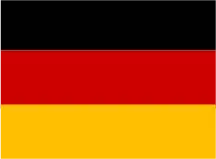Germany has historically been one of the pioneering countries in the implementation of electromobility policies in Europe, with specific regulations and a strong focus on infrastructure and emission reduction.
Some of these regulations appear to have served as a foundation for recent initiatives by the European Union (EU), such as the Alternative Fuels Infrastructure Regulation (AFIR).
However, beyond the mere adoption of regulations, the analysis of their dates and characteristics demonstrates the EU’s interest in harmonising eMobility policies.
In this context, it regards Germany as a key reference in certain aspects, while adapting and expanding the approach for the entire region.
Charging Infrastructure Regulation (LSV) and AFIR
In Germany, the Charging Infrastructure Regulation (LSV) has been a crucial standard for the deployment of charging infrastructure, establishing interoperability requirements, accessible payment methods, and price transparency.
This has facilitated access to and usage of charging stations throughout the country.
Since its initial implementation, this regulation has become a standard, promoting compatibility of charging points with Type 2 and CCS connectors.
This model has been replicated in the EU’s Alternative Fuels Infrastructure Regulation (AFIR), which was approved in 2023.
Essentially, the AFIR draws from the LSV in terms of interoperability and accessibility, aiming to standardise the use of charging infrastructure across Europe and facilitate access for tourists and citizens of other member states.

Thomas Bella, a board member of the Federal Association for New Mobility Consulting (BBNM e.V.), confirms to Mobility Portal Europe:
“Although the LSV has largely been replaced by the AFIR, the design of German charging infrastructure continues to stand out due to its calibration system and price regulation.”
He adds: “This ensures that charging points in the country maintain specific requirements distinct from neighbouring countries.”
Greenhouse Gas Quota (THG-Quote) and eCredits
Another significant regulation in Germany is the Greenhouse Gas Quota (THG-Quote), a measure that incentivises emissions reductions in the transport sector.
The EU’s Renewable Energy Directive II (RED II), adopted in 2018, reflects this vision by mandating a progressive reduction of CO2 in transport through specific quotas for fuel suppliers.
Similar to the THG-Quote, this introduces economic compensation mechanisms via emission certificates, enabling charging infrastructure operators to generate additional revenue.
This model, known as eCredits, is expected to promote the use of renewable energies and the deployment of alternative fuel infrastructure within the EU.
In this regard, an industry expert states to Mobility Portal Europe: “Germany is leading in the implementation of eCredits and in the valuation of renewable electricity for private charging.”
Common goals between Brussels and Germany
Germany has been driving policies for years to electrify corporate and public transport fleets in key cities.
This effort resonates with the EU’s Sustainable and Smart Mobility Plan, launched in 2021, which sets specific targets for fleet electrification in both the public and private sectors.
The strategy requires member states to design their own policies to encourage the use of electric vehicles in their fleets, drawing inspiration from the experiences of countries such as Germany.
Furthermore, the implementation of Low Emission Zones (LEZs) in German cities, such as Berlin and Hamburg, has inspired one of the EU’s latest initiatives within the Green Deal.
This initiative mandates that all European cities with populations exceeding 100,000 establish LEZs by 2030.
Through this, the EU aims to reduce urban pollution, promote the use of electric vehicles, and transform urban environments into more sustainable areas.
What is Germany currently reveloping in electromobility?
Economy Minister Robert Habeck has indicated that the country continues to innovate in areas such as bidirectional technology.
This system, which enables electric vehicles to function as energy storage units, supports the stabilisation of the energy grid.
In this context, Germany is implementing the BiFlex-Industrie project to develop charging stations with bidirectional storage capacity.
“The first V2H systems are expected to be available by 2025, with V2G following shortly thereafter, making the infrastructure not only a charging point but also a stabilising element for the grid,” he explained.







